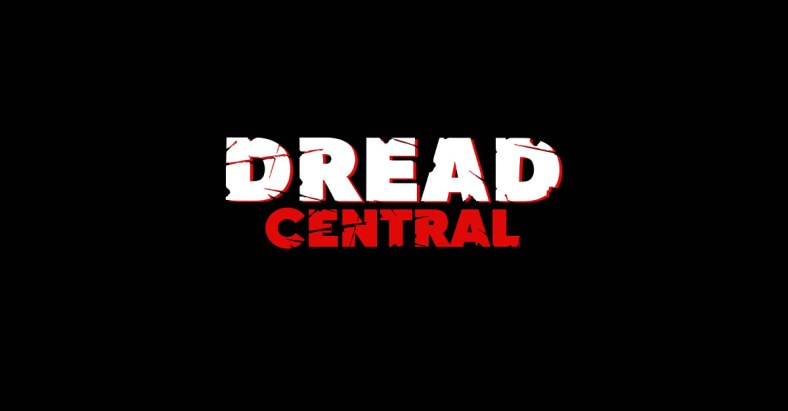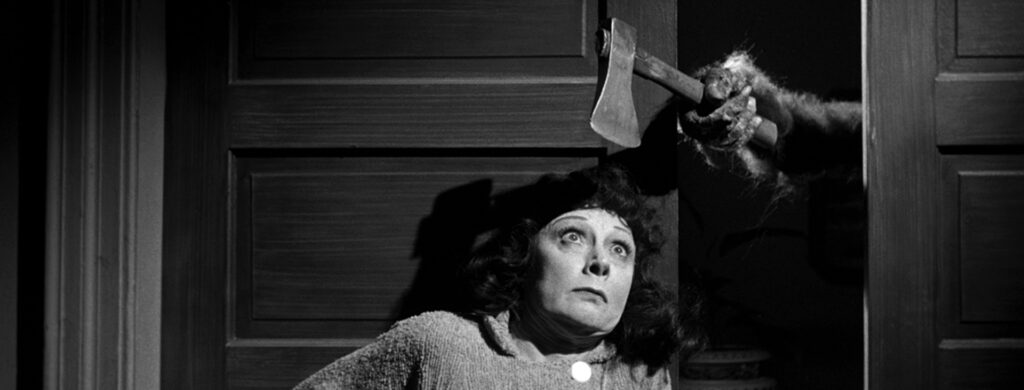Celebrate William Castle’s Birthday With 6 of His Classic Films

If H.G. Lewis is the Godfather of Gore, then William Castle must be horror’s lovable Grandfather of Pomp. Or, at the very least, horror’s sneaky uncle. And just like family, we sometimes take him for granted, relegating him to the bowels of schlock cinema – a term that celebrates the gimmickry of niche movie-making but not its inherent ingenuity.
The name William Castle has become synonymous with classic horror, never dared spoken in the same breath as Hitchcock or even Val Lewton, for that matter. No, Castle is the midnight movie madman who elevated audience exploitation to an art form and invented the twist ending decades before M. Night Shyamalan pitched The Sixth Sense to Disney executives. Now, the name William Castle elicits a sinister smirk onto the faces of multiple generations of mischievous moviegoers. When Castle introduces himself onscreen, you feel as if a dear old friend has just dropped by for a much-needed, long overdue visit.
It’s Castle’s birthday week here at Dread Central, and to highlight his historic career, I’ve picked a few of his classic films for horror fans to fondly revisit. Or, if you’re among the uninitiated, to watch and enjoy for the very first time. Castle was famous for his immersive theatrical experiences, so if you’re watching at home, do your best to recreate the feeling of a night out at the movies. If you have a rubber skeleton or a joy buzzer handy, I’d advise you to pull those out now!
Homicidal
“The more adventurous among you may remember our previous excursions into the macabre – our visits to haunted hills – to tinglers and to ghosts. This time we have even a stranger tale to unfold … The story of a lovable group of people who just happen to be homicidal.”
When William Castle utters these words at the beginning of Homicidal, his warmth and amiability shine through the screen. Meant to put the audience at ease, Castle looks as if he’s coming to tuck us in and read a very inappropriate bedtime story.
Homicidal unabashedly lifts scenes and setups from Psycho and, reportedly, it began filming before Hitchcock’s masterpiece of suspense even left theaters. Castle’s version is even more twisted than Psycho and surprisingly tense during certain moments. A high point in Castle’s canon, it’s a classic example of why he was known as the “King of Showmanship.”
Homicidal centers around a blonde bombshell named Emily (Jean Arless) who is secretly after the family fortune of an unsuspecting, wheelchair-bound grandmother. Emily goes on a knife-wielding murder spree while the family tries to stay alive and keep their inheritance. At the beginning of the third act, the “fear clock” pops up on screen. Viewers have 45 seconds to flee the theater (or the living room) and run out to “Coward’s Corner” in the lobby, where they can breathe easy until the film is over. Try and recreate it as best you can!
The ending is genuinely shocking and I won’t give it away here, mainly because William Castle appears on screen at the end of the film and told us not to. Besides, all of you have probably already seen it, right?
Strait-Jacket
The opening sequence of Strait-Jacket features a young daughter witnessing Joan Crawford butcher her husband and his mistress with an ax. William Castle naturally saw a perfect opportunity for his daughter’s screen debut. Castle wound up casting Diane Baker to play Crawford’s daughter after little Terry Castle grew frightened of Crawford on set.
Convicted ax murderess Lucy Harbin (Crawford) is released from prison after serving a 26-year sentence for her dastardly crimes. Lucy reconnects with her daughter on a remote farm where, eventually, history starts to repeat itself and Lucy is compelled to wield the ax once more.
Strait-Jacket features Crawford in one of her last roles. Just like many older actresses, she turned to horror and to William Castle in her later years. During filming, the set was absolutely freezing because Crawford insisted it made her skin tighter. For those who don’t know, Joan Crawford’s husband owned Pepsi. If you pay attention you can definitely see some strategically placed six-packs of the classic soda pop in various scenes.
Mr. Sardonicus
The “Punishment Poll” is the gimmick here, a card that is passed out to each member of the audience to vote “mercy” or “no mercy” for the heartless, tortured Mr. Sardonicus. The titular character must wear a wax mask (one that suspiciously resembles the filmmaker) after being horribly disfigured upon seeing the face of his dead father after defiling his grave to retrieve a winning lottery ticket. Through a combination of psychological experiments (and rigorous massage), Sardonicus’ features have returned to normal. But he finds himself unable to speak or eat. He winds up alone, with only his lowly minion to keep him company. The film fades to black …
Castle appears on screen and asks if Sardonicus has been punished adequately. Castle knew the unforgiving nature of his audience. Today, it’s still unclear if an alternate finale showing the “mercy” ending was ever filmed.
House on Haunted Hill
The combination of Vincent Price and William Castle gave the director his biggest hit. House on Haunted Hill is undeniably Castle’s most enduring film, largely because of its relatively straightforward plot. Vincent Price challenges five brave souls to survive the night inside a supposedly haunted mansion. If they survive, they’ll be rich beyond their wildest dreams.
Towards the end of the film, a skeleton rises from the grave and begins to stalk the conniving Annabelle Loren. Suddenly, she is in danger of being frightened to death. At that moment, one of Castle’s most remembered gags is revealed. Castle named the stunt the Emergo! experience. A skeleton emerges from the front of the theater and floats toward the audience via a rigged pulley system. In one of the best reveals in horror history, Price appears controlling the skeleton like a mad puppeteer. It’s time for his conniving wife to finally get a taste of her own medicine.
Night Walker
Night Walker features Barbara Stanwyck in her final film role. She went on to work in television but this film was her send-off, and it’s definitely a career highlight. A black-and-white precursor to A Nightmare on Elm Street, Stanwyck’s Irene Trent is haunted by her dead husband’s horribly burned ghost after he perished in an accidental explosion. Castle loved to pull the curtain back during the finale and the ending of Night Walker wraps things up with a classic scene of detective exposition.
Let’s Kill Uncle
Featuring a cameo from William Castle dying in a car wreck during the first scene, Let’s Kill Uncle is the closest thing the director ever came to making a black comedy. Nigel Green’s brilliant performance as the calculating uncle hellbent on killing his nephew for a hefty inheritance is actually reason enough to watch this forgotten gem. Green tries everything from hypnotism to a pool of sharks (well, one shark) to kill his unsuspecting nephew, Barnaby. Luckily, Barnaby recruits his friend Chrissie to help thwart his evil Uncle. The two clever kids conspire to turn the tables and take out the diabolical grown-up before it’s too late.
In a time where cinema chains across the country are desperately trying to keep butts in seats, it’s this kind of theatricality that is sorely lacking in today’s movie-going experience. Instead of feeling involved, giddy, and connected to one another, we’re actually getting more removed, irritable, and annoyed when the lights go down in our local cineplex. We need the lighthearted craftsmanship of William Castle now more than ever.
At times, his films played to the lowest common denominator. But they never undermined the audience’s enjoyment. Castle never talked down to the moviegoer and that respect permeates down from the projector to the seats below. Let’s remind each other to keep Castle’s vision alive. He embodies a spirit of filmmaking that wants to laugh with the audience instead of laugh at them. A statue of William Castle basks in the moonlight inside the pantheon of B-movie auteurs. His legend continues to grow with each passing year.

Categorized:Editorials

